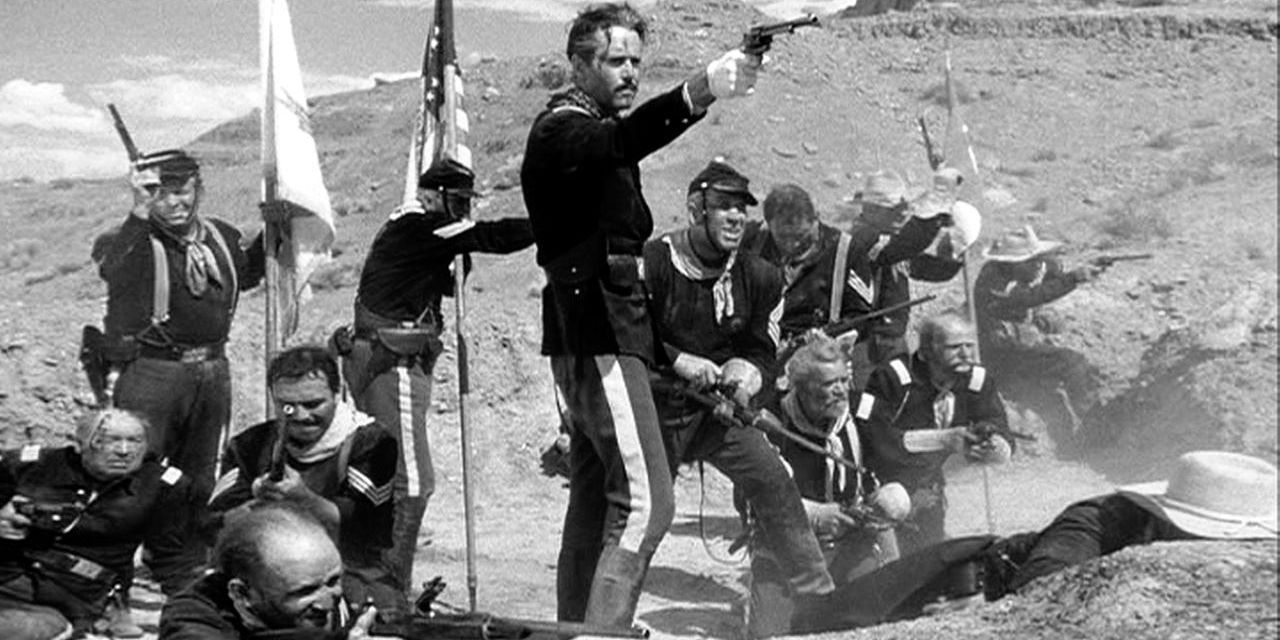After La La Land walked away from the Producers Guild of America Awards with its highest honour, its odds of Oscar glory seem all but set in stone. While the PGA Award is by no means a guarantee of future Best Picture success, 19 of its 27 recipients over the course of 28 years went on to take the top honor, so the odds are certainly in La La Land‘s favour.
Damien Chazelle’s critically acclaimed musical drama has been the Oscar front-runner since its premiere at the Venice Film Festival, but even before audiences saw it, the buzz surrounding the project frequently brought up its awards chances, leading to it being dubbed “Oscar bait”. The description is commonly used (often as a pejorative) in film circles, but can be tough to fully explain. Much of the phenomenon relies on specifically defining the kind of film being made, rather than the ways it is sold to audiences, as well as the ways in which producers campaign for it as an awards hopeful. The route to winning an Oscar is not set in stone, but there are clear markers in place that make the process tangible to outsiders.
Originally, the Academy of Motion Pictures Arts and Sciences (AMPAS, most commonly known as the Academy) began in the 1920s as a means for studio heads to mediate labor disputes without involving workers’ unions. The awards ceremony was introduced to help improve the industry’s public image and legitimize their efforts. The first Academy Awards was held in 1929 as a private dinner where 15 statuettes were given over the course of 15 minutes. The winners had already been announced to the media several months earlier, and it wasn’t until 1941 that the Academy reverted to the sealed envelope format, with both audiences and the media finding out the results at the same time.

This format didn’t necessarily require the same kind of campaigning the current Oscar race does, nor did it come with the same level of prestige it would later embody. The concept of a “baity” film is as old as the industry itself, with the term “Oscar bait” first being used in a review from The New Republic to describe John Ford’s Fort Apache. The strategy of holding the prestige pic back to a late December limited release to qualify for the Oscars before expanding nationwide the following month is also a decades old tactic, which worked well for Gone with the Wind.
Oscars are good for business, helping to increase ticket sales for general release, but the first film to explicitly use Oscar nominations as a means to promote itself was Michael Cimino’s The Deer Hunter. The 1978 film, while generally considered a masterpiece today, was disastrously received in test screenings, who rejected its bleak tone and brutal depiction of the Vietnam War, only three years after that conflict had ended. The film had gone over-budget and Universal Pictures were ready to write it off as a failure before it had even been released.
That changed when producer Allan Carr came on board and helped nurture The Deer Hunter to Oscar success. He did this by insisting the film open only in two cinemas – one in New York and one in Los Angeles, which remains a requirement for Oscars qualifications – for a fortnight, screening for critics and Academy members. The film also screened on the Z Channel, a tiny cable network that catered to indie and arthouse crowds (TV screenings prior to a cinema release is now against Academy rules), and gained traction with its intended audience until the Oscar nominations were announced. It received nine and won five, then grossed close to $50m at the box office as a result of its awards success.
This tactic became increasingly commonplace in the 1980s, as a new generation of film-makers like Steven Spielberg and George Lucas pioneered the modern Summer release blockbuster, pushing more adult oriented dramas down the list of studios’ priorities. As with The Deer Hunter, it became crucial for a smaller drama to rack up Oscar nominations in order to entice viewers to the cinema.
Nobody better exemplified this model than Harvey Weinstein. As head of Miramax in the 90s, Weinstein knew that independent studios lacked the aggressive campaigning tactics of the more established ones, and thus sought to beat them at their own game. The producer became notorious for his tactics, which included a mixture of meet-and-greet events for Academy members to meet the film’s talent, setting up screenings at the Motion Picture Retirement Home (savvy given the increased average age of voters), political campaigning (as part of the My Left Foot campaign, he had its star Daniel Day-Lewis testify in the Senate for the Disability Act), relentless marketing, and a few rumored smear campaigns.

The dirty tactics of the Oscar season are something of an open secret in Hollywood, although few are willing to point fingers or name names. Weinstein is the producer with the most dirt attached to him, with Peter Biskind documenting in his book Down and Dirty Pictures the myriad of ways Miramax took on its competition. In 2002, Biskind writes, when Miramax’s In The Bedroom went up against A Beautiful Mind, they reportedly engineered a “smear campaign unprecedented in the history of the Academy Awards for its viciousness”, mostly related to John Nash’s alleged homosexuality and accusations of anti-Semitism. It didn’t work – A Beautiful Mind won Best Picture – but it’s a tactic that has yielded success in the past: Knock down your opponent and make sure voters know there’s a viable alternative in your film.
The campaign is prime for winning an Oscar, but it must back up worthy material. That doesn’t necessarily mean the film has to be the worthiest in terms of merit (many argue that merit has nothing to do with the Oscars process). This is where the use of “Oscar bait” as a term becomes tricky; often, it’s employed as a catchment phrase to define all Autumn releases that aren’t blockbusters. As such, the term is frequently given to films that have similar markers of a baity film but are far too distant from the formula to qualify. Pablo Larrain’s Jackie was deemed Oscar bait due to its biopic nature and leading performance, but that is surrounded by a film utterly unlike its contemporaries that’s too dream-like and unsettling to be dismissed as begging for awards. Paul Thomas Anderson’s The Master lived with the Oscar bait label for many months despite being an abrasive and ambiguous project with little concern for appealing to the masses.
Still, the markers of Oscar bait projects are well-known for a reason: Lavish costume dramas; historical biopics swelling with nobility; ambitious displays of technical achievement; actors who have undergone major physical changes reading from the Method Handbook; loving homages to the power of Hollywood; and tear-jerkers with big emotional displays ready for the awards show clip. A sociological study of the process by UCLA revealed the elements of a film most likely to receive Oscar nominations, as well as the ways such films are perceived by general audiences. The film decreed to be the most blatant Oscar bait among those studied was Come See The Paradise, a 1990 Alan Parker film that tackled a tragic true story of Japanese internment in America and received the now expected late December eligibility push, yet garnered zero nominations. While the process can be predictable, it’s not always a safe bet.

While the end result may be the one everybody predicted, the race forward will remain a toughly fought fight. George Clooney once joked that the awards season promotion of “kissing babies” could take its toll on people, saying “You can justify it by saying, ‘I’m helping the movie,’ but you cross a line where it feels like you’re only helping yourself. And it starts to feel unclean.” That may be true for some, but it’s a process countless industry individuals put themselves through every year because it’s a process that works and it’s one that can handsomely reward its victors. Right now, directors and actors are shaking hands at parties, joking along on talk-shows, and making their presence impossible for the Academy to ignore. After all, an Oscar can reap creative and financial benefits that would change their careers. Producers and distributors garner long-term rewards with short-term awards gain: A24 became a major indie player after Oscar success with Room and Ex Machina, and are using similar tactics for Moonlight, and Amazon Studios received renewed legitimacy for their film distribution thanks to the recent nominations of Manchester by the Sea.
Even with the same campaigning of decades past going on this season, 2017’s Best Picture nominations show a diverse range of films that often reject the assumed notions of awards glory, even as they embody many of the expected elements: A jazz-infused homage to Golden Age musicals to tell the story of a fractured romance; an intimate drama of the life of a gay black man spanning three time periods; a heist movie using the tropes of the Western to explore the modern day economic crisis; a meditative science-fiction story using linguistics as its driving force; a historical drama centred on three African American scientists working on the Space Race.
Stories this diverse are tough to get made in a market where the billion-dollar franchise reigns supreme, and publicity harder to come by. While they may not fit the expected mould of Oscar bait, the handbook to awards glory is well-read for a reason. Want to win an Oscar? You’d better be willing to fight for it.




